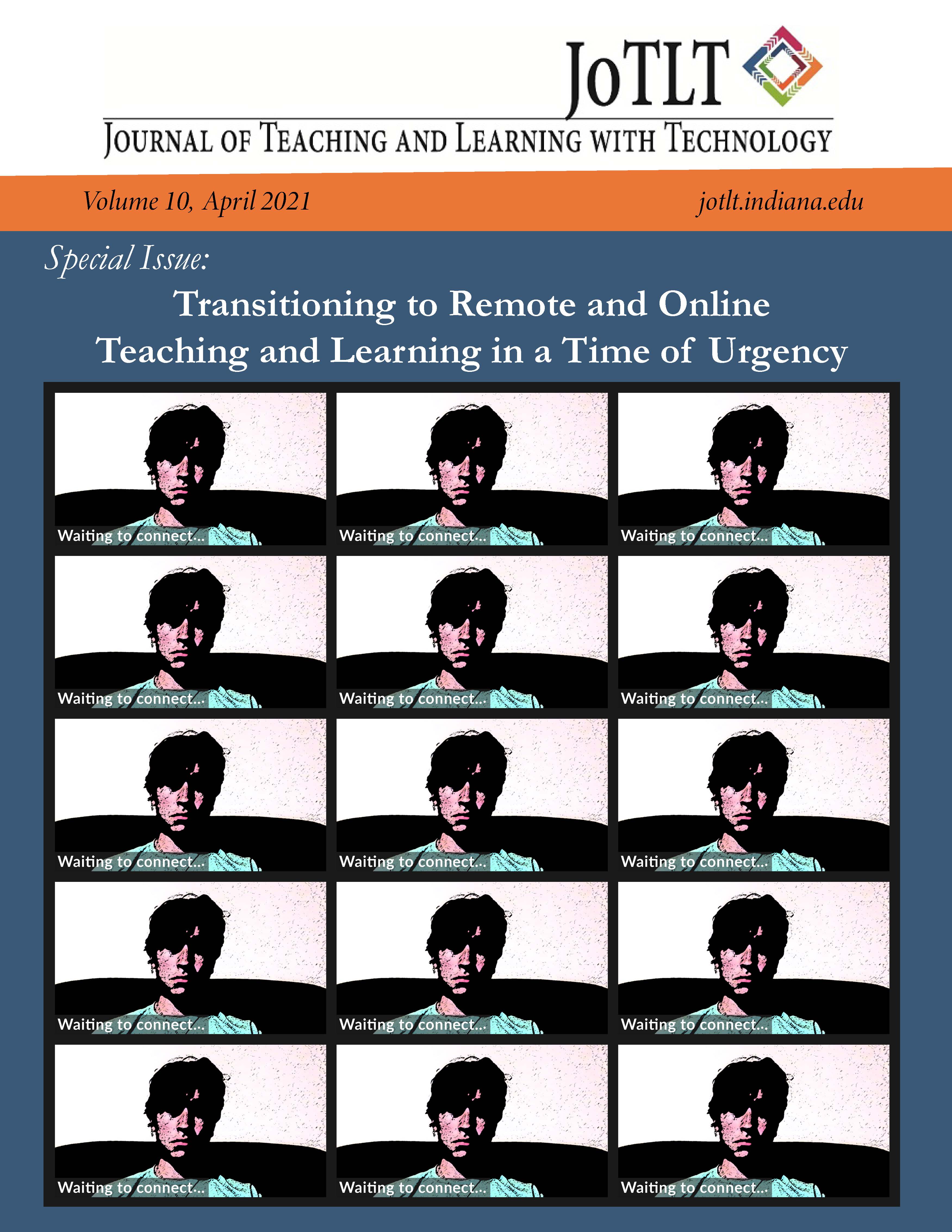Emergency Remote Studio Teaching Notes from the Field
Main Article Content
Abstract
The creative arts use primarily visual, kinaesthetic and somatic modes that depend on face-to-face communication in contrast to many other university subjects which rely more heavily on the written word. The hands-on, practice-based nature of art education makes it perhaps one of the least transferrable subjects to a fully online model. What can be learnt, then, from the forced situation of teaching and supervising studio-based learning in a higher education context under COVID-19 conditions? This reflective essay draws on the writer’s experience as a Fine Arts lecturer involved in emergency remote teaching (ERT) of studio-based, visual arts courses during the 2020 academic year. Framed as a series of ‘fieldnotes’ it aims to capture those fleeting, yet significant, thoughts and reflections so easily lost once things quickly reach a level of ‘new normal’. Notes from the field include: the effects of the shifted social dynamic of online communications in a teaching and learning context; the challenges of the video call as a dialogic space for the studio critique; the impact of the more structured nature of online systems with regard to documenting and recording creative work-in-progress; and the affordances of the dynamic, multi-modal nature of the digital medium for working with contextual research material. Developed as a pedagogical perspective combining reflection-in-action and reflection-on-action I offer first-hand observations and discussion, socialised against relevant literature, as a contribution to urgent conversations on the shape of the future learning environment.
Downloads
Article Details
- Authors retain copyright and grant the Journal of Teaching and Learning with Technology (JoTLT) right of first publication with the work simultaneously licensed under a Creative Commons Attribution License, (CC-BY) 4.0 International, allowing others to share the work with proper acknowledgement and citation of the work's authorship and initial publication in JoTLT.
- Authors are able to enter separate, additional contractual agreements for the non-exclusive distribution of the journal's published version of the work (e.g., post it to an institutional repository or publish it in a book), with an acknowledgement of its initial publication in JoTLT.
- In pursuit of manuscripts of the highest quality, multiple opportunities for mentoring, and greater reach and citation of JoTLT publications, JoTLT encourages authors to share their drafts to seek feedback from relevant communities unless the manuscript is already under review or in the publication queue after being accepted. In other words, to be eligible for publication in JoTLT, manuscripts should not be shared publicly (e.g., online), while under review (after being initially submitted, or after being revised and resubmitted for reconsideration), or upon notice of acceptance and before publication. Once published, authors are strongly encouraged to share the published version widely, with an acknowledgement of its initial publication in JoTLT.
